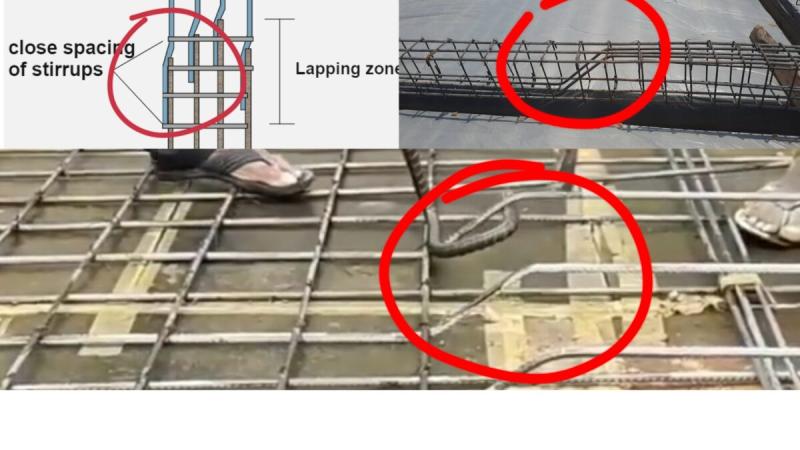Introduction
In the realm of construction, ensuring the strength and durability of concrete structures is paramount. Crank bars, also known as bent bars or hook bars, play a crucial role in reinforcing concrete to withstand various forces and loads. This blog explores the purpose of crank bars, their standards, including Indian standards, and additional essential information that construction professionals should know.
What is a Crank Bar?
A crank bar in construction refers to a reinforced steel bar with bends or hooks at specific angles, typically 45° or 30°. It is strategically placed in concrete structures like slabs and beams to enhance their strength and durability by resisting tensile and compressive forces effectively.
Why Crank Bars Provided?
The inclusion of crank bars in slabs enhances their structural resilience significantly. By placing these bars near supports at angles like 45° or 30° (in shallow beams), they effectively mitigate maximum tensile stresses at mid-span and compressive stresses at supports. This reinforcement strategy markedly improves both the strength and deformation capacity of RCC slabs compared to those without crank bars.
Purpose of Crank Bars
Crank bars are primarily used in reinforced concrete structures to provide additional strength and resistance against tension forces. They are designed with bends or hooks at specific angles, which anchor the bars securely into the concrete. The key purposes of crank bars include:
- To resist negative bending moment (hogging).
- To resist shear force which is bigger at supports.
- To scale back the danger of a brittle failure of slab-column connection.
- To scale back the quantity of steel used.
- For the economization of materials.
Standards for Crank Bars
Standards and specifications ensure that crank bars meet required performance and safety criteria. Here are some key aspects related to standards:
- International Standards:
- Crank bars are designed according to international codes such as ACI (American Concrete Institute), Eurocode, or BS (British Standards), which specify dimensions, angles of bends, spacing, and placement requirements.
- Indian Standards:
- In India, crank bars are governed by standards set by the Bureau of Indian Standards (BIS), particularly IS 2502:1963 (Code of Practice for Bending and Fixing of Bars for Concrete Reinforcement). This standard outlines specifications for bending dimensions, permissible tolerances, and quality requirements of reinforcement bars used in concrete construction.
- Material Specifications:
- The quality of materials used for crank bars, typically high-strength steel (e.g., Fe 415 or Fe 500), must adhere to BIS standards for mechanical properties, ensuring durability and structural integrity.
- Fabrication Tolerances:
- BIS standards also define permissible tolerances for dimensions, bends, and hooks to ensure consistency and reliability in construction practices across India.
- BIS standards also define permissible tolerances for dimensions, bends, and hooks to ensure consistency and reliability in construction practices across India.
Additional Information about Crank Bars
Beyond their basic functions and standards, here are some additional aspects of crank bars that are crucial in construction:
- Types of Crank Bars:
- L-shaped Crank Bars: Bent at one end to form an L-shape, used in columns and beams.
- U-shaped Crank Bars: Bent at both ends to form a U-shape, often used in slabs and foundation elements.
- Installation Techniques:
- Proper Placement: Crank bars should be positioned according to design specifications, ensuring adequate coverage and spacing within concrete members.
- Secure Anchoring: Hooks or bends must be securely embedded in concrete to resist pull-out forces and ensure effective load transfer.
- Benefits in Construction:
- Enhanced Durability: Reinforced concrete structures with crank bars exhibit improved resistance to cracking and deformation, prolonging their lifespan.
- Structural Efficiency: By reinforcing critical points prone to stress, crank bars optimize the structural efficiency of concrete elements.
- Challenges and Considerations:
- Construction Constraints: Proper handling and placement of crank bars require skilled labor and adherence to safety protocols to avoid damage or misalignment.
- Environmental Factors: Crank bars must be protected from corrosion, managed through appropriate concrete cover thickness and use of corrosion-resistant coatings, as per BIS guidelines.
Conclusion🎯
Crank bars are indispensable components in modern construction, vital for reinforcing concrete structures and ensuring their strength and longevity. Adhering to established international and Indian standards, along with best practices, is crucial to maximizing their effectiveness and minimizing risks during construction. By understanding the purpose, standards, types, and additional considerations of crank bars, construction professionals can ensure the structural integrity and durability of concrete buildings and infrastructure projects in India and globally.

